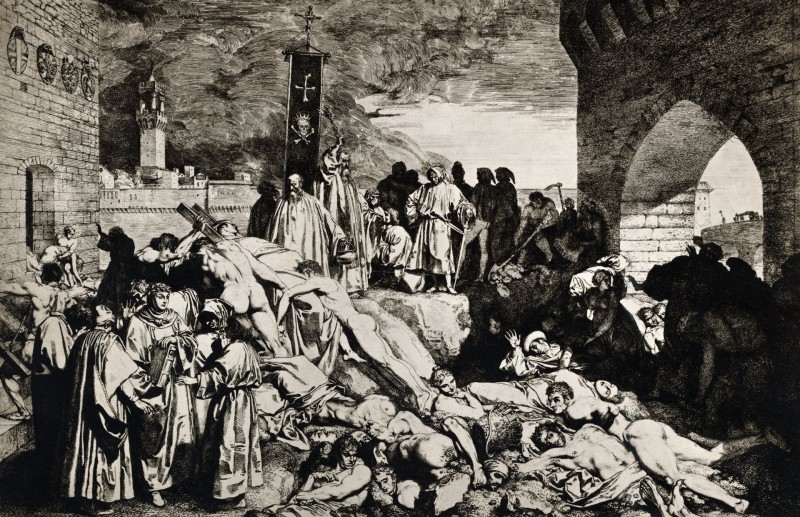
The Black Death, one of the most devastating pandemics in human history, swept across Europe during the 14th century, leaving a trail of death and despair in its wake. This article delves into the historical context of the Black Death, explores the grim consequences it had on society, examines the treatments employed during that time, and concludes with the long-term impact of this catastrophic event.
Historical Background: The Black Death, also known as the Bubonic Plague, originated in the 1330s in Asia and quickly spread along trade routes to Europe. In 1347, it made its way to Europe through the port of Messina in Sicily. From there, it rapidly disseminated throughout the continent, causing widespread devastation. The plague was caused by the bacterium Yersinia pestis, which was primarily transmitted through fleas that infested black rats.
Death and Devastation: The impact of the Black Death was staggering. It is estimated that between 75 and 200 million people died, representing 30–60% of the European population at the time. The speed at which the disease spread was unprecedented, leading to a high mortality rate. The symptoms of the disease included swollen and painful lymph nodes, fever, chills, fatigue, and the appearance of blackish spots on the skin, hence the name "Black Death."
The mortality rate varied across regions and social classes. Cities were particularly hard-hit due to their dense populations and inadequate sanitation systems. The loss of life caused a severe labor shortage, resulting in economic decline, disrupted trade, and widespread social unrest. The psychological impact was immense, with the fear of death and the breakdown of societal norms leaving people in a state of despair.
Treatment and Responses: During the time of the Black Death, medical understanding of diseases was limited, and treatments were often ineffective. Physicians and healers relied on a mix of religious rituals, herbal remedies, and questionable practices. Bloodletting, the use of leeches, and the application of cautery were common treatments, but they did little to alleviate the suffering or halt the spread of the disease.
Society responded to the outbreak with a mix of fear, superstition, and blame. Scapegoating became prevalent, with Jewish communities being targeted and accused of spreading the disease. Mass hysteria led to pogroms and the destruction of Jewish settlements. Additionally, some communities resorted to isolating themselves to prevent the spread of the disease, implementing strict quarantine measures.
Conclusion: The Black Death had a profound and long-lasting impact on Europe. The catastrophic loss of life led to significant social, economic, and political transformations. The labor shortage resulted in higher wages for workers, which gradually weakened the feudal system and led to the rise of the middle class. The event also sparked cultural changes, with a newfound emphasis on the fleeting nature of life and the prominence of death in art, literature, and religious practices.
In terms of medical advancements, the Black Death prompted a renewed interest in the study of diseases and their causes. It led to the development of quarantine practices and the establishment of hospitals for treating the sick. Although it took centuries for medical science to advance significantly, the Black Death served as a wake-up call and laid the groundwork for future breakthroughs.
While the Black Death was an unprecedented tragedy, it also brought about profound societal changes and contributed to the shaping of Europe's future. It stands as a grim reminder of the devastating impact of pandemics throughout history and serves as a testament to humanity's resilience in the face of unimaginable suffering.
In conclusion, the Black Death remains a haunting chapter in human history. Its destructive force serves as a stark reminder of the fragility of life and the importance of proactive measures to prevent and combat the spread of diseases. By understanding the lessons learned from this dark period, we can strive to build a safer and healthier future for all.
Understanding the Dangers: Exploring the Potential Side Effects of Medication Overdose
10 Easy and Effective Ways to Achieve Healthy Weight Loss
The Mighty Amchur Powder: Unveiling Its Wide Range of Benefits